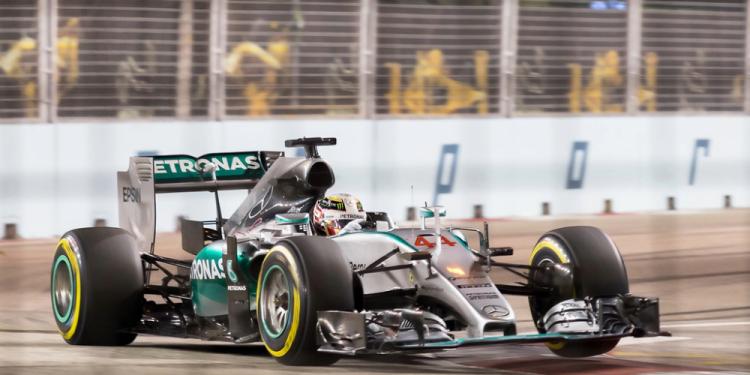Best Innovations in Formula 1 History – 5 Decisions That Changed the Game
Posted: November 2, 2023
Updated: November 2, 2023
-
Formula 1 is a constantly developing sport
-
What were the best devices and rules that made F1 safer?

Formula 1 is a constantly developing sport that takes it almost to the edge. Therefore, constructors are constantly experimenting with their cars to provide the best results and ensure their drivers’ well-being. Not all experiments were successful, but let’s focus on the best innovations in Formula 1 history that really helped to make the most efficient and safest cars.
Best Innovations in Formula 1 History
Since the beginning of competitive racing and Formula 1 in particular, most believed that a car needs to be most importantly, fast. While it is true, constructors also pay attention to other aspects of making an F1 car great, including safety, fuel efficiency, aerodynamics, and aesthetics.
In this piece, we decided to recall some of the best innovations in Formula 1 history while waiting for the next Grand Prix. Don’t forget to make your predictions at online sportsbooks in Brazil!
Wings
Wings haven’t always been a part of Formula 1 cars. In 1968, Colin Chapman’s team Lotus was looking for enhanced aerodynamic stability. They installed a pair of thin pieces of aluminum at the front of the Lotus 49B car, as well as another but bigger one on its back.
This seemingly small modification helped the car to become more stable aerodynamically in mid-speed corners and pass them faster. The rest of the pack followed shortly, and teams like Brabham, Matra, Ferrari, and BRM all had wings installed on their cars. To this day, wings play a crucial role in a car’s stability and downforce, making them one of the best innovations in Formula 1 history.
Ground effect
Just like wings, the ground effect was first implemented by Colin Chapman on Lotus 78. Ground effect is a specific aerodynamic principle used to increase the downforce on the car, which improves traction and handling, particularly when cornering at high speeds.
In F1, the ground effect involves creating a low-pressure area beneath the car by carefully designing the underbody of the vehicle, which generates downforce. The underbody is shaped to create a Venturi effect, where air is accelerated underneath, reducing pressure and effectively “sucking” the car towards the track.
Lotus 78 made Mario Andretti a Formula 1 champion in 1978, while ground effect became the base aerodynamic principle for all teams until 1983. Then, it was banned for being too dangerous and remained as a part of Formula 1 history.
Carbon-fiber monocoque
Also known as a survival cell, carbon-fiber monocoque is one of the best innovations in Formula 1 history in safety terms. It was first introduced by McLaren in 1983 and was later made mandatory for all teams.
Initially, carbon-fiber monocoque was implemented by air force constructors to make jet fighters safer for their pilots. In the early 1980s, McLaren’s technical director, John Barnard, tried to convince the team that they needed to use carbon fiber in their chassis, too. He believed it would improve safety and decrease the weight of a car. The team was skeptical but decided to test the innovation.
And they were right. At the Italian Grand Prix in 1981, John Watson obliterated his car but walked away unscathed. The results showed that carbon fiber consumed most of the impact energy, which was the reason for Watson’s escape.
Head and Neck Support Device
Head and neck support device (HANS) has been one of the crucial safety devices used in Formula 1 and many other forms of motorsport. This device is designed to protect drivers in case of a crash by reducing the risk of serious neck and head injuries, particularly those related to whiplash or basilar skull fractures.
After Imola’s disastrous weekend in 1994, where two of the three accidents could have been prevented if HANS had been in use, and Mika Häkkinen’s heavy impact at Adelaide in 1995; F1 knew they had to save driver’s skulls and necks from getting crushed at such high-speed crashes. In 2002, HANS was created and made mandatory.
Ever since, F1 never experienced skull or neck injury-related accidents which could not have been saved by HANS – all thanks to the device. Will Formula 1 implement new safety devices in the future? Bet at MyBookie.ag.
Halo
One of the most important and simply the best innovations in Formula 1 history is Halo. It is a safety device in most open-wheel motorsports to enhance driver protection in case of accidents, particularly those involving head injuries.
The primary purpose of the Halo is to protect the driver’s head from flying debris, such as loose car parts or objects from the track, in the event of a collision. It is also designed to minimize the risk of head injuries and has proven its effectiveness in various real-world incidents.
The most significant occasions that convinced every F1 fan of Halo’s necessity were Jules Bianchi’s fatal accident at Suzuka and Lewis Hamilton & Max Verstappen double retirement at Monza. The most infamous accident was Romain Grosjean’s crash at Sakhir in 2020, where he barely escaped decapitation. In fact, Halo would have saved many F1 drivers who died on the track, including Francois Cevert, Tom Pryce, Patrick Depailler, and Ayrton Senna.
Click here to try the best odds at MyBookie.ag












